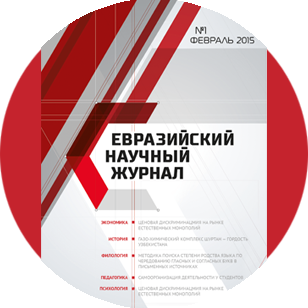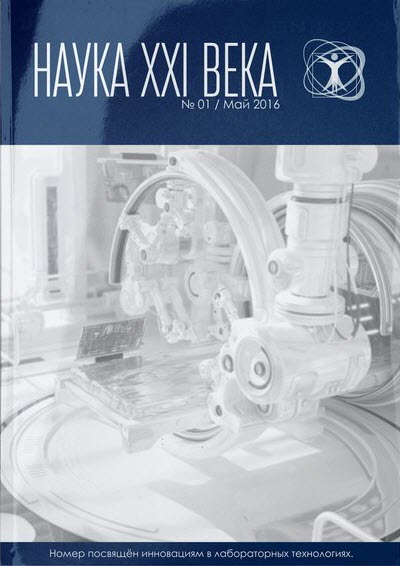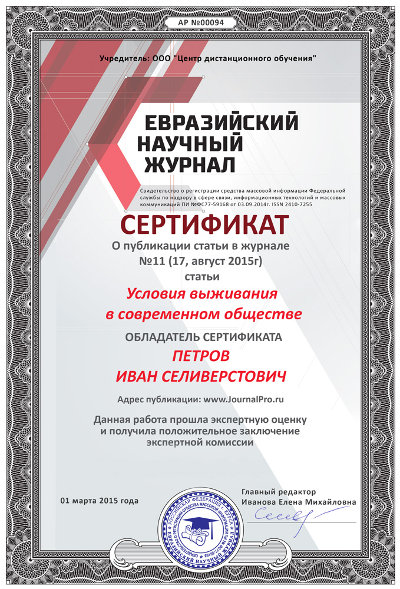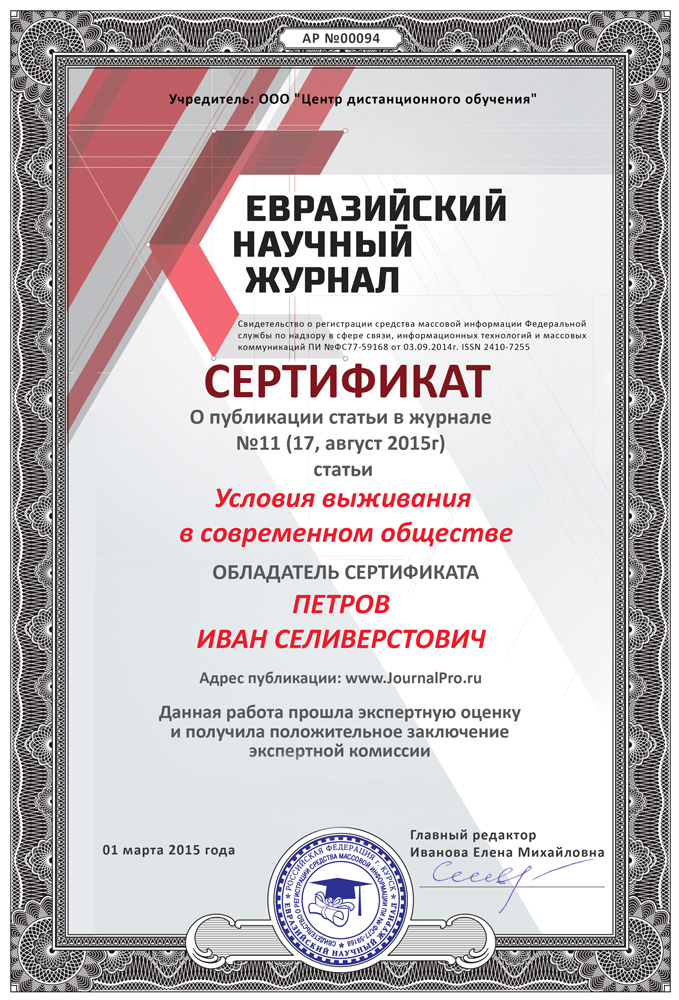Срочная публикация научной статьи
+7 995 770 98 40
+7 995 202 54 42
info@journalpro.ru
Using interactive methods in teaching grammar
Рубрика: Филологические науки
Журнал: «Евразийский Научный Журнал №4 2018» (апрель, 2018)
Количество просмотров статьи: 4673
Показать PDF версию Using interactive methods in teaching grammar
MIRZAYEVA LOLA AMIRKULOVNA
TerSU, Uzbekistan
"The task of science is shaping our future directions of tomorrow, the laws of nature, the show the way it is. Science must be the means, by force, driving forward the development of societies." [1]
Formation of the young specialist takes place in university classrooms, and time-consuming process of training based on the methods of teaching effectiveness that ultimately determines the skill level of the future specialist. The fruitfulness of the joint activity of the teacher and the student depends on the correct problem solving:
a) Setting teaching objectives, and the consequent motivation for the student
b) The accomplishment of certain materials’ contents
c) The control of knowledge.
Teachers should support their students when they want to resolve everyday problems that refers to learning languages, especially on learning grammar. There are several models of pedagogy study:
1) Passive — student acts as the “object” of study (listening and watching)
2) Active — student acts “subject” of learning (independent work, creative tasks)
3) Interactive — inter (mutual), act (act). The learning process is carried out in a continuous, active cooperation of all students. Students and teachers are equal subjects of study. [2]
Teaching students’ grammar rules without giving the students an opportunity to use these rules will not help them use English in real life. Language teachers and language learners in many non-native countries are often frustrated by the disconnect between knowing the rules of grammar and being able to apply those rules automatically in listening, speaking, reading, and writing. This disconnect reflects a separation between declarative knowledge and procedural knowledge.
Native English speakers learn grammar rules from hearing and listening from the real situations. [3] In many English classrooms, teachers often set aside a particular time slot that is dedicated to the study of grammar. Such periods often focus on different points of grammar, such as tense, active and passive voice, or reported speech.
Grammar is something that runs through just about every aspect of language. Even the simplest sentences have grammar. Our curriculum may require us to teach stand-alone grammar lessons, and it’s important to introduce various grammar points and topics so that the students have a richer understanding of the mechanisms of language. In English classes we often include music of English feature. These highlight the structure of grammar and stress patterns of the key everyday expressions that are presented. As learners are keen to learn these high frequency expressions, it is well worth making sure that they know exactly how to use them with the correct of using grammar. For example, if we deal to Present Simple and Present Continuous the Beatles’ songs are available:
Here comes the Sun
Here comes the Sun
And I say
It’s alright
Little darling.
I feel that ice is slowly melting
Little darling.
To check the learners how to understand these two tenses we can use interactive ask-answer methods such as: Here comes the Sun. Who comes here? Where does the Sun come from? In addition, I say it is all right. What do I say? I feel that ice is slowly melting. What is slowly melting? How is ice melting? What is ice doing? Testing your grammar for learners of Intermediate and Upper-Intermediate levels will be fruitful, in which a text is given to put the events into chronological order. What happened first? What happened last?
As I am interested teaching grammar to young learners I usually use the text-book “Developing Grammar in Context” by Mark Nettle and Diana Hopkins in which exercises have been added the activities of interaction as: brainstorming, cluster, games such kind of feeling jar, how to place the order of adjectives, ready-made picture, case-studies and others. These activities focused on how grammatical concepts can be practiced with fun in the classroom.
For conclusion, I want to argue that it will be worth to teach grammar by interesting interactive grammar activities, which are designed for pre-grammar, while-grammar and post-grammar stages. In pre-grammar stage, we can use declarative approach to explain all features of certain grammar function with helping interactive methods. In while-grammar stage, we can gain and fix of new grammatical combination and in post-grammar stage, students are led to follow grammar accuracy in speaking with using some interactive methods.
BIBLIOGRAPHY
- Mark Nettle and Diana Hopkins. “Grammar in Context”. Cambridge University Press.2003
- Ellis R. “Current issues in the teaching of grammar: an SLA perspective”. TESOL Quarterly, 2006 p
83-107. - Brown H. D. “Teaching by principles. An interactive approach to language teaching pedagogy”. New York: Longman 2001.
- Carter R. & Hughes R. “Exploring Grammar in Context”. Cambridge: Cup.2000.
REMARKS
- И.Каримов. Без исторической памяти нет будущего / Свое будущее мы строим своими руками. Т.7. Ташкент: “Ўзбекистон”, 1999г. с.146.
- Технологии интерактивного обучения на уроках иностранного языка. Автор: Елена Сопова. Рубрика: Мастерская профессионального развития. Пятница 22 Март 2013 http://iyazyki. prosv.ru/2013/03/interactive-language/.
- Aj Hoge. Seven rules of effortless learning English, Rule 2









